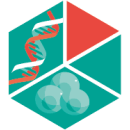Turbocharging plasmid DNA production: a case study on optimization through novel technologies
Cell & Gene Therapy Insights 2025; 11(7), 919–931
DOI: 10.18609/cgti.2025.102
The growing demand for high-quality plasmid DNA in gene therapy and DNA vaccines necessitates improvements in manufacturing processes. This study explored optimizing tangential flow filtration (TFF), following cell lysis and depth filtration, by evaluating filter types, shear rates, and automation features. The implementation of a fully automated TFF system paired with the ideal membrane format reduced processing time by 300% and enhanced RNA removal while preserving supercoiled pDNA. Optimal shear rates further improved efficiency. Additionally, scale-up using single-use TFF for pre-chromatography and final formulation steps was assessed. The results highlighted the value of automation and real-time monitoring in maximizing recovery and maintaining product quality, offering a more efficient, scalable pDNA production platform.
